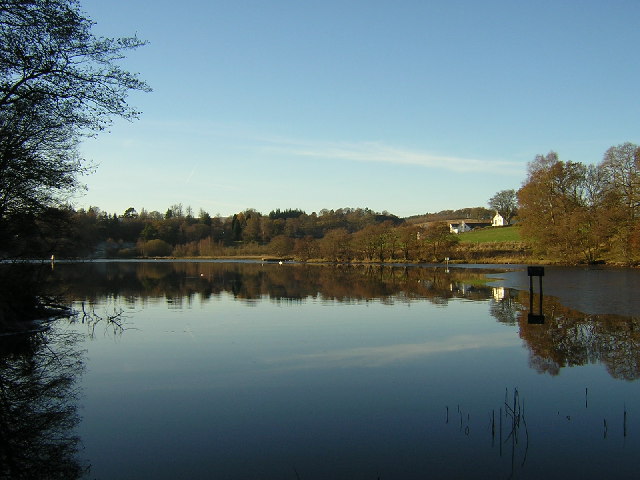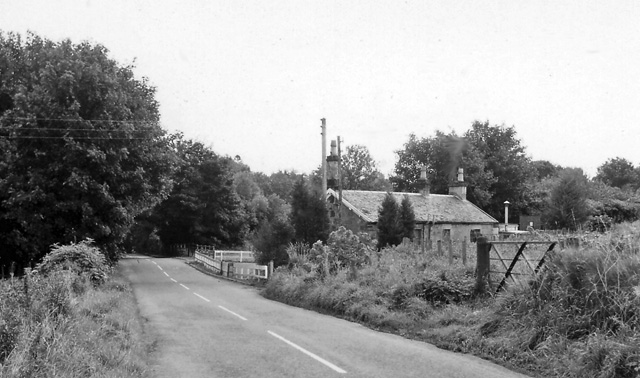|
Carbeth
Carbeth is a hamlet in Stirlingshire, west of Strathblane and north of Clydebank. Named features include Carbeth Hill, Carbeth Loch and the estate of Carbeth Guthrie. There is a community of huts here which was established in 1918 after the First World War, as a summer camp for returned soldiers. Famous residents * William Smith of Carbeth Guthrie, Lord Provost of Glasgow The Right Honourable Lord Provost of Glasgow is the convener of the Glasgow City Council. Elected by the city councillors, the Lord Provost serves not only as the chair of that body, but as a figurehead for the entire city. The office is equ ... 1822–24 References External links * Protected areas of Stirling (council area) {{Scotland-stub ... [...More Info...] [...Related Items...] OR: [Wikipedia] [Google] [Baidu] |
Carbeth Guthrie
Carbeth is a hamlet in Stirlingshire, west of Strathblane and north of Clydebank. Named features include Carbeth Hill, Carbeth Loch and the estate of Carbeth Guthrie. There is a community of huts here which was established in 1918 after the First World War, as a summer camp for returned soldiers. Famous residents * William Smith of Carbeth Guthrie William Smith of Carbeth Guthrie (1787–1871) was a 19th-century Scottish sugar trader who served as Lord Provost of Glasgow from 1822 to 1824. Life He was born on 12 January 1787 on Dunlop Street in Glasgow. He was second son of Archibald S ..., Lord Provost of Glasgow 1822–24 References External links * Protected areas of Stirling (council area) {{Scotland-stub ... [...More Info...] [...Related Items...] OR: [Wikipedia] [Google] [Baidu] |
William Smith Of Carbeth Guthrie
William Smith of Carbeth Guthrie (1787–1871) was a 19th-century Scottish sugar trader who served as Lord Provost of Glasgow from 1822 to 1824. Life He was born on 12 January 1787 on Dunlop Street in Glasgow. He was second son of Archibald Smith of Jordanhill (1749-1821) near Glasgow, and his wife, Isabella Euing (1755-1855). His brothers were Archibald Smith and James Smith of Jordanhill. He served as Dean of Guild to Glasgow City Council in 1821 and as Lord Provost 1822 to 1824. He was a partner in the sugar trading firm of Smith & Brown who owned the Jordanhill sugar plantation o the Naparima Plain on Trinidad in the West Indies. He also owned the Wotten Waven estate on Dominica. When Britain abolished slavery in is colonies he received two-thirds of the compensation for the Jordanhill estate (Brown receiving one third). He purchased the estate of Carbeth in 1834 from his cousin John Guthrie and renamed it "Carbeth Guthrie". It laid in his family's ancestral home of Str ... [...More Info...] [...Related Items...] OR: [Wikipedia] [Google] [Baidu] |
Stirling (council Area)
The Stirling council area ( sco, Stirlin; gd, Sruighlea) is one of the 32 council areas of Scotland, and has a population of about ( estimate). It was created under the Local Government etc (Scotland) Act 1994 with the boundaries of the Stirling district of the former Central local government region, and it covers most of Stirlingshire (except Falkirk) and the south-western portion of Perthshire. Both counties were abolished for local government purposes under the Local Government (Scotland) Act 1973. The administrative centre of the area is the city of Stirling, with the headquarters at Old Viewforth. The area borders the council areas of Clackmannanshire (to the east), North Lanarkshire (to the south), Falkirk (to the south east), Perth and Kinross (to the north and north east), Argyll and Bute (to the north and north west), and both East and West Dunbartonshire to Stirling's southwest. The majority of the population of the area is located in its southeast corne ... [...More Info...] [...Related Items...] OR: [Wikipedia] [Google] [Baidu] |
Stirlingshire
Stirlingshire or the County of Stirling, gd, Siorrachd Sruighlea) is a historic county and registration countyRegisters of Scotland. Publications, leaflets, Land Register Counties. of Scotland. Its county town is Stirling. It borders Perthshire to the north, Clackmannanshire and West Lothian to the east, Lanarkshire to the south, and Dunbartonshire to the south-east and south-west (this latter boundary is split in two owing to Dunbartonshire's Cumbernauld exclave). Coat of arms The County Council of Stirling was granted a coat of arms by Lord Lyon King of Arms on 29 September 1890. The design of the arms commemorated the Scottish victory at the Battle of Bannockburn in the county. On the silver saltire on blue of St Andrew was placed the rampant red lion from the royal arms of Scotland. Around this were placed two caltraps and two spur-rowels recalling the use of the weapons against the English cavalry. On the abolition of the Local Government council in 1975, the arms ... [...More Info...] [...Related Items...] OR: [Wikipedia] [Google] [Baidu] |
Strathblane
Strathblane ( gd, Strath Bhlàthain, ) is a village and parish in the registration county of Stirlingshire, situated in the southwestern part of the Stirling council area, in central Scotland. It lies at the foothills of the Campsie Fells and the Kilpatrick Hills on the Blane Water, north of Glasgow, east-southeast of Dumbarton, and southwest of Stirling. Strathblane is a dormitory village for Greater Glasgow, and has a total resident population of 1,811. Historically, Strathblane was the name of a parish in Stirlingshire which comprised three villages: Edenkill, Netherton and Mugdock. Mugdock was the ancient seat of the Earls of Lennox, and to the east of Strathblane lies the town of Lennoxtown. Blanefield is a settlement contiguous with Strathblane's northwestern fringe. To the west is the volcanic plug Dumgoyne, Glengoyne Distillery and the Trossachs National Park. The West Highland Way—a long-distance trail—passes close to the village. The Gaelic name ''Srath Bhl� ... [...More Info...] [...Related Items...] OR: [Wikipedia] [Google] [Baidu] |
Lord Provost Of Glasgow
The Right Honourable Lord Provost of Glasgow is the convener of the Glasgow City Council. Elected by the city councillors, the Lord Provost serves not only as the chair of that body, but as a figurehead for the entire city. The office is equivalent in many ways to the institution of mayor that exists in the cities of many other countries. The Lord Provost of the City of Glasgow, by virtue of office, is also: *Lord-Lieutenant of the County of the City of Glasgow *a Commissioner of Northern Lighthouses. Each of the 32 Scottish local authorities elects a provost, but it is only the four main cities, Glasgow, Edinburgh, Aberdeen and Dundee that have a Lord Provost, who also serves as the lord-lieutenant for the city. This is codified in the '' Local Government etc. (Scotland) Act 1994''. As of 2017, the role attracts an salary of £41,546, plus an annual expenses budget of £5000. The current Lord Provost of Glasgow, elected in May 2022, is Jacqueline McLaren. The Lord Pr ... [...More Info...] [...Related Items...] OR: [Wikipedia] [Google] [Baidu] |
Stirling And Falkirk
Stirling and Falkirk is a lieutenancy area of Scotland. It consists of the local government areas of Stirling and Falkirk Falkirk ( gd, An Eaglais Bhreac, sco, Fawkirk) is a large town in the Central Lowlands of Scotland, historically within the county of Stirlingshire. It lies in the Forth Valley, northwest of Edinburgh and northeast of Glasgow. Falkirk had a ..., which cover the same areas as the previous districts from 1975 to 1996. References The Lord-Lieutenants (Scotland) Order 1996, Statutory Instrument 1996 No. 731 (S.83). Lieutenancy areas of Scotland Falkirk (council area) Stirling (council area) {{Scotland-gov-stub ... [...More Info...] [...Related Items...] OR: [Wikipedia] [Google] [Baidu] |
Stirling (UK Parliament Constituency)
Stirling is a county constituency of the House of Commons of the Parliament of the United Kingdom. It elects one Member of Parliament (MP) by the first past the post system of election. Boundaries 1983–1997: The Stirling District electoral divisions of Airthrey, Bannockburn, Castle, Dounebraes, Menteith, Queensland, St Ninians, Strathendrick, Viewforth, and Wallace. 1997–2005: The Stirling District electoral divisions of Bannockburn, Castle, Dounebraes, Menteith, Queensland, St Ninians, Strathendrick, Viewforth, and Wallace. 2005–present: The Stirling council area. The constituency covers the whole of the Stirling council area. Most of the area is rural, which has tended to vote Conservative, but there are some large towns in the East, most notably Stirling itself, which used to vote Labour, but has now moved towards SNP. A similar constituency, also called Stirling, is used by the Scottish Parliament. History The area covered by the modern constituency was first re ... [...More Info...] [...Related Items...] OR: [Wikipedia] [Google] [Baidu] |
Stirling (Scottish Parliament Constituency)
Stirling is a constituency of the Scottish Parliament ( Holyrood) covering part of the council area of Stirling. It elects one Member of the Scottish Parliament (MSP) by the plurality (first past the post) method of election. It is one of nine constituencies in the Mid Scotland and Fife electoral region, which elects seven additional members, in addition to the nine constituency MSPs, to produce a form of proportional representation for the region as a whole. The seat has been held by Evelyn Tweed of the Scottish National Party since the 2021 Scottish Parliament election. Electoral region The other eight constituencies of the Mid Scotland and Fife region are Clackmannanshire and Dunblane, Cowdenbeath, Dunfermline, Kirkcaldy, Mid Fife and Glenrothes, North East Fife, Perthshire North, Perthshire South and Kinross-shire. The region covers all of the Clackmannanshire council area, all of the Fife council area, all of the Perth and Kinross council area and a ... [...More Info...] [...Related Items...] OR: [Wikipedia] [Google] [Baidu] |
Clydebank
Clydebank ( gd, Bruach Chluaidh) is a town in West Dunbartonshire, Scotland. Situated on the north bank of the River Clyde, it borders the village of Old Kilpatrick (with Bowling and Milton beyond) to the west, and the Yoker and Drumchapel areas of the adjacent City of Glasgow immediately to the east. Depending on the definition of the town's boundaries, the suburban areas of Duntocher, Faifley and Hardgate either surround Clydebank to the north, or are its northern outskirts, with the Kilpatrick Hills beyond. Historically part of Dunbartonshire and founded as a police burgh on 18 November 1886, Clydebank is part of the registration County of Dumbarton, the Dunbartonshire Crown Lieutenancy area, and the wider urban area of Greater Glasgow. History Early origins Clydebank is located within the historical boundaries of the ancient Kingdom of Strathclyde, the Mormaerdom of Lennox, and the parish of Old Kilpatrick (12th century), on the north bank of the River Clyde. A long-standi ... [...More Info...] [...Related Items...] OR: [Wikipedia] [Google] [Baidu] |
World War I
World War I (28 July 1914 11 November 1918), often abbreviated as WWI, was List of wars and anthropogenic disasters by death toll, one of the deadliest global conflicts in history. Belligerents included much of Europe, the Russian Empire, the United States, and the Ottoman Empire, with fighting occurring throughout Europe, the Middle East, Africa, the Pacific Ocean, Pacific, and parts of Asia. An estimated 9 million soldiers were killed in combat, plus another 23 million wounded, while 5 million civilians died as a result of military action, hunger, and disease. Millions more died in Genocides in history (World War I through World War II), genocides within the Ottoman Empire and in the Spanish flu, 1918 influenza pandemic, which was exacerbated by the movement of combatants during the war. Prior to 1914, the European great powers were divided between the Triple Entente (comprising French Third Republic, France, Russia, and British Empire, Britain) and the Triple A ... [...More Info...] [...Related Items...] OR: [Wikipedia] [Google] [Baidu] |



